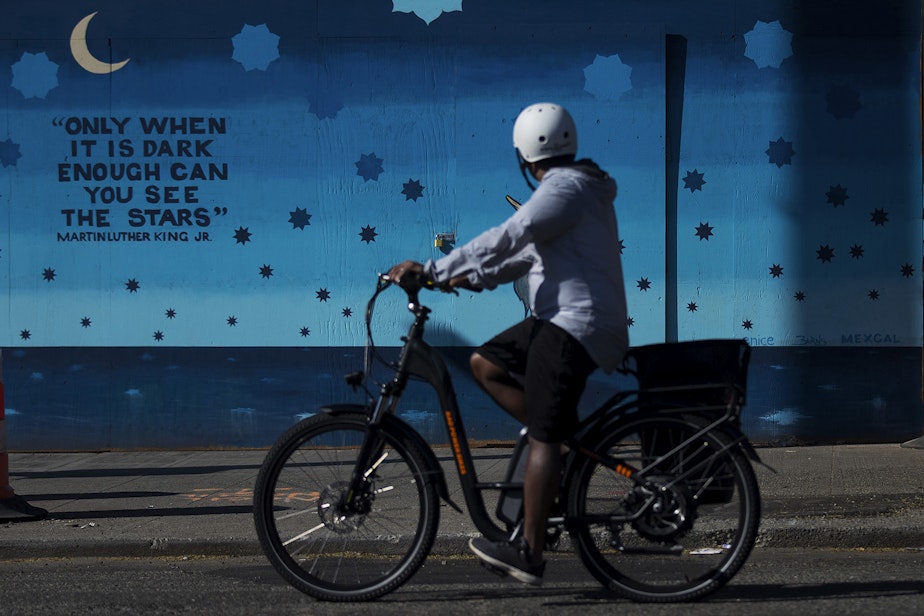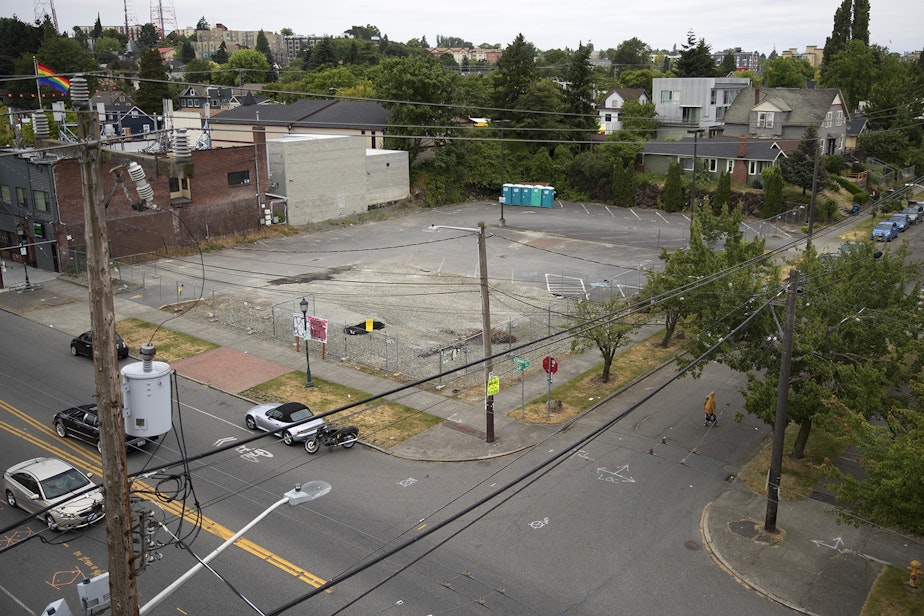Race matters: Understanding how the Central Area was gentrified

The black population in Seattle fell below 7% for the first time since the 1960s, according to an analysis by the Seattle Times in 2018. And the Central District, which was nearly 75% black back in the 1970s is now only 15% black.
Gentrification is one reason, but there’s also another big reason, says Ron Sims, former King County executive, and former deputy secretary of Housing and Urban Development.
Right after World War II, when Boeing basically hired on African Americans, African Americans moved into the Central Area, in particular, to buy their homes.
Not the north in the Seattle, because north in the Seattle had covenants on their property that would not provide opportunity for African Americans. And that effort was led by John L. Scott and Bill Boeing.
So African Americans began to concentrate housing purchases in the Central Area. And then there was an attended growth of rental opportunities.
But African Americans in King County and elsewhere are not likely to get the same pay as their white counterparts for doing the same body of work. And so not only in Seattle King County, but across the country when I was back working for the U.S. Department of Housing and Urban Development, we studied this issue and the pattern exists everywhere in the country.
And that is that we saw, much to our surprise, the migration of African Americans from large core cities to the suburbs, and people say well, suburban housing was more expensive, but this isn't quite true.
It's because a nation that has argued it has achieved as a quality has never done that on the income side, which is the principal measure of where you can buy, so African Americans are acquiring and holding on to their wealth in the suburban areas.

Redlining was if you were south of the Ship canal bridge, people of color could buy. If you were north of the canal, you could not. To this very day, there are still covenants on property that say you cannot sell to a black, but they've been found unconstitutional, and nobody wants to pay the price to have them removed. But that is the case.
In the suburbs, if you were an African American, you were uninvited. Period. You were steered away from suburban housing.
Then came federal housing programs, and a group of development developers came in and they were building housing by the hundreds almost, you know, all the houses look the same.
But they built an oversupply of their housing, because they were assuming that they're going to be really, really attractive, everybody would want to move there. So then they began to realize there was an audience of purchasers, and those are African Americans. And you began to see the movement of African Americans all across the country into more of what we call the suburban areas.
Gentrification in the Central District was inevitable.
It was inevitable because you didn't have a strong downtown core as an employment center for decades. I mean, you had downtown where you go shop, and you had hotels, and then all of a sudden companies began to build down there and the most explosive example would be South Lake Union, which was torn down from its warehouses and became a huge economic hub that large employers began to move in.
So all of a sudden the downtown area became an employment center and people who were in those companies and in those tall buildings working for private employers for the most part, basically, were earning enough income to go into the Central Area, and the Central Area responded as markets do, which is that if you are willing to pay more for housing, somebody is willing to sell that to you.
So what you basically saw was an influx, and again, a part of the disparity in terms of income.
African Americans were not able to get into the Central Area, they ended up moving down into South Seattle then later from South Seattle into the suburbs, but white employees, because they wanted to get to their jobs more easily, were given more money per job than African Americans, and therefore could afford to buy in the Central Area.
There are still African Americans living there. And a lot of that is because you have, because of the Seattle Housing Authority, building housing for people who were poor with proximity to good schools. So, you know, you want it and that's what they have done with incredible precision. And I think that the reason why there are still a number of African Americans living -- not as many as when I first came here, and not as many as many of us remember from our recollections and the history of people talking to us -- but that presence is still there.
And I think a large part it's been due to the Housing Authority, which did several things. They didn't build that old fashioned, ugly housing authority that screams out loud, “I am poor.” They re-fashioned it, and re-tooled it.
So sometimes in the Central Area, you don't know where that black family there is actually going to work every day. The Housing Authority also had another tool, which is the ability to buy a house, and we rent it, or we sell it. And African Americans were on top of that customer list.

When you look at the raw data, the number one wealth gains for African Americans in particular is their house. The value is not the stock market. It is not the retirement that they have. It is the home they own.
We were sued by eight African American women in the city of Baltimore when I was at HUD. I loved the suit. People thought I was loved it too much.
Eight African American women sued the Baltimore Housing Authority and the federal government.
They said, give us money to buy vouchers to buy housing and other areas, and we want damages. They all moved out of Baltimore. They moved into Baltimore suburbs, because their kids had access to better schools. They graduated, which was stunning, because Baltimore had a high dropout rate.
These women were able to get proximity to the school. So they didn't have to have a car, or wait for a bus to have their kids picked up. It altered their lives and their stories were so powerful.
It reminded many of us working at HUD at the time, under President Obama, that there isn't a single tool that works. The idea is to provide fullness of opportunity where people wish to seek it.
The data would say that the likelihood of being able to get a home in the suburbs for African Americans is much higher than in a central city, San Francisco being a prime example. Same thing is true in Los Angeles. New York.
I don't know how Seattle regains momentum. The housing the markets have taken over here.
And I haven't seen a change where people get paid.
This story is part of a weeklong series on systemic racism in our institutions. Here are the interviews:
Race and the justice system: 3 areas to target, according to this Seattle professor
Race matters: Understanding how the Central Area was gentrified
Race is not a health risk factor. Racism is

